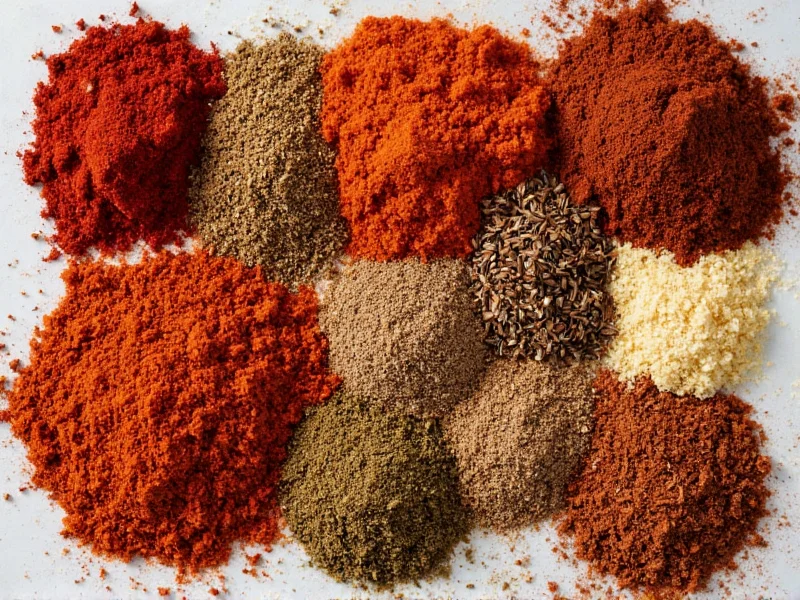Creating the perfect beef roast starts with understanding how spices interact with meat fibers and fat content. The right spice blend enhances beef's natural umami while creating a flavorful crust through the Maillard reaction during cooking. This guide provides evidence-based recommendations for seasoning beef roasts that deliver consistent, restaurant-quality results.
Essential Spice Categories for Beef Roast
Successful beef roast seasoning involves balancing four key spice categories that work synergistically:
| Category | Function | Top Recommendations |
|---|---|---|
| Base Salts | Protein denaturation for moisture retention | Kosher salt, sea salt, celery salt |
| Aromatic Herbs | Flavor complexity and aroma | Rosemary, thyme, oregano, sage |
| Peppery Elements | Heat and depth | Black pepper, mustard seeds, coriander |
| Aromatic Alliums | Savory backbone | Garlic powder, onion powder, shallot powder |
Proven Spice Combinations for Different Beef Cuts
Not all beef roasts respond equally to the same seasoning approach. The marbling and connective tissue content determines optimal spice ratios:
Traditional Herb-Crusted Roast (for Ribeye or Tenderloin)
This classic blend works best with well-marbled cuts where the fat carries the flavors. Combine 2 tablespoons coarse salt, 1 tablespoon freshly cracked black pepper, 1 tablespoon dried rosemary (crushed), 2 teaspoons dried thyme, and 1 teaspoon garlic powder. Apply this mixture 12-24 hours before cooking to allow proper flavor penetration into the meat fibers.
Mediterranean Spice Rub (for Top Round or Eye of Round)
Leaner cuts benefit from this moisture-retaining blend featuring 2 tablespoons sea salt, 1 tablespoon smoked paprika, 2 teaspoons dried oregano, 1 teaspoon fennel seeds, and 1 teaspoon lemon zest. The paprika creates a protective layer that prevents moisture loss during cooking, while the lemon zest brightens the finished dish.
Classic French Roast Beef Seasoning
Authentic French roast beef relies on simplicity: equal parts coarse salt and freshly cracked black pepper, with optional additions of 1 crushed garlic clove and fresh thyme sprigs inserted into slits in the roast. This minimalist approach showcases the beef's natural flavor profile without overwhelming it.
Timing and Application Techniques
The timing of spice application significantly impacts flavor development. For optimal results:
- Dry brining: Apply salt-based rubs 12-48 hours before cooking to enhance moisture retention and flavor penetration
- Room temperature rest: Allow seasoned roast to sit at room temperature for 1-2 hours before cooking for even heat distribution
- High-heat searing: Start roasting at 450°F (230°C) for 15 minutes to activate spice compounds before reducing to 325°F (165°C)
- Basting: Use rendered fat to baste during cooking, which carries spice flavors into the meat
Avoiding Common Seasoning Mistakes
Many home cooks make these critical errors when seasoning beef roasts:
- Applying spices immediately before cooking (prevents proper flavor penetration)
- Using pre-ground spices that have lost potency (always use freshly ground when possible)
- Over-seasoning with salt (use 1 teaspoon per pound as maximum guideline)
- Adding sugar-based rubs too early (causes premature caramelization and burning)
- Not accounting for carryover cooking when determining final seasoning intensity
Storage and Preparation Tips for Spice Blends
For consistent results, prepare your spice blends properly:
- Mix dry ingredients thoroughly in a glass bowl (metal can affect flavor)
- Store unused blends in airtight containers away from light and heat
- Grind whole spices immediately before use for maximum flavor release
- Toast mustard seeds or coriander before grinding to enhance aromatic compounds
- Always measure spices by weight rather than volume for precision
Regional Variations Worth Trying
Explore these culturally authentic beef roast seasoning approaches:
- Argentinian Asado: Coarse salt with chimichurri elements (oregano, red pepper flakes)
- German Sunday Roast: Caraway seeds, juniper berries, and marjoram
- American Midwest: Onion powder, celery salt, and a touch of brown sugar
- British Sunday Roast: Mustard powder, thyme, and a hint of mace
What is the best time to apply spices to beef roast before cooking?
Apply salt-based rubs 12-48 hours before cooking for optimal flavor penetration and moisture retention. For non-salt rubs, 2-4 hours before cooking provides sufficient time for flavor development without compromising texture.
Can I use fresh herbs instead of dried in my beef roast spice blend?
Yes, but use three times the amount of fresh herbs compared to dried. Fresh rosemary and thyme work exceptionally well when finely minced and rubbed directly onto the roast surface or inserted into slits in the meat.
Why shouldn't I include garlic directly in my dry rub?
Fresh garlic can burn at roasting temperatures, creating bitter compounds. Instead, use garlic powder in your dry rub and add fresh garlic cloves to the roasting pan, where they'll cook gently in the rendered fat without burning.
How much spice blend should I use per pound of beef roast?
Use approximately 1.5-2 teaspoons of spice blend per pound of raw beef. For salt specifically, use no more than 1 teaspoon per pound to avoid over-salting, especially when dry brining for extended periods.
Which spices should I avoid when making beef roast?
Avoid delicate herbs like basil or cilantro that burn easily at roasting temperatures. Also skip sugar-heavy blends during initial cooking stages, as they'll caramelize too quickly and create a bitter crust. Save sweet elements for glazes applied during the final 30 minutes of cooking.











 浙公网安备
33010002000092号
浙公网安备
33010002000092号 浙B2-20120091-4
浙B2-20120091-4